Design Note DN001
Antenna Measurement with Network Analyzer
By Audun Andersen
Keywords
• Antenna
• Network Analyzer
• Measure
1
Introduction
The performance of an antenna will impact
the communication range of a RF system.
Since range is often a critical factor when
designing RF systems, it is important to be
able to characterize the antenna. One
parameter that is important, and which can
easily be measured is the return loss (RL).
Impedance mismatch between the feeding
transmission line and the antenna causes
reflection at the feed point of the antenna.
Because of this reflection not all of the
available power will reach the antenna,
• Return Loss
• Reflection
•
Impedance
feed point of
and thus the field strength of the radiated
signal will be reduced. RL describes how
much of the available power is reflected at
the
the antenna. This
document describes how RL can be
measured, with a network analyzer, and
how
result. The
measurement technique described in this
document is only applicable to single
ended antennas. A brief explanation on
how to tune the antenna impedance is
also described.
to
interpret
the
SWRA096
Page 1 of 10
�
Design Note DN001
Table of Contents
KEYWORDS.............................................................................................................................. 1
INTRODUCTION............................................................................................................. 1
1
ABBREVIATIONS........................................................................................................... 2
2
3
IMPEDANCE MATCHING .............................................................................................. 3
4
HOW TO MEASURE RETURN LOSS AND IMPEDANCE............................................ 3
CALIBRATION ............................................................................................................. 3
MOUNTING OF SEMI RIGID COAX CABLE...................................................................... 4
PLACEMENT OF THE DEVICE UNDER TEST................................................................... 5
INTERPRETING MEASUREMENT RESULTS..................................................................... 5
ANTENNA TUNING........................................................................................................ 7
GENERAL INFORMATION ............................................................................................ 9
DOCUMENT HISTORY.................................................................................................. 9
IMPORTANT NOTICE .................................................................................................. 10
4.1
4.2
4.3
4.4
6.1
5
6
7
2 Abbreviations
RC
RL
VSWR
Remote Control
Return Loss
Voltage Standing Wave Ratio
SWRA096
Page 2 of 10
�
Design Note DN001
3
Impedance Matching
to an
To ensure that maximum power is delivered from a transmission line with impedance Z0
antenna with impedance Za, it is important that Z0 is properly matched to Za. If a signal with
amplitude VIN is sent in to the transmission line, only a part of the incident wave will be
transmitted to the antenna if Z0 is not properly matched to Za. The remaining part will be
reflected back to the generator with amplitude of Vrefl.
Figure 1. Reflection at the Feed Point of the Antenna
The complex reflection coefficient Γ is defined as the ratio of the reflected waves’ amplitude to
the amplitude of the incident wave. Γ can be calculated from the impedance of the
transmission line and the impedance of the antenna, as shown in Equation 1
=Γ
Z
Z
−
+
a
a
Z
Z
0
0
Equation 1. Calculation of Γ
The reflection coefficient is zero if the transmission line impedance is the complex conjugate
of the antenna impedance. Thus if Za = Z*
0 the antenna is perfectly matched to the
transmission line and all the applied power is delivered to the antenna. The power ratio of the
reflected to the incident wave is called return loss (RL). The RL gives how many dB the
power of the reflected wave is below the incident wave.
2
RL
=
10
⋅
log
−=
10
⋅
log
−=Γ
20
⋅
log
Γ
P
in
P
refl
Equation 2. Calculation of Return Loss
Equation 2 shows that RL only depends on the absolute value of the reflection coefficient.
Phase is not evaluated when measuring the RL.
4 How to Measure Return Loss and Impedance
This section describes how to use a network analyzer to measure the impedance and RL of
an antenna. It also deals with factors that can affect the measurement result and how to
interpret the results. One should be aware that especially placement of the antenna during
measurement can affect the result.
4.1 Calibration
It is important to calibrate the network analyzer before doing measurements. The network
analyzer should be calibrated for a suitable frequency range containing the band where the
antenna will operate. Typically network analyzers have a cable with SMA connector in the
end. Calibration is performed by connecting three known terminations, 50 ohm load, short,
and open, to this SMA connector. After calibration the reference plane will be at the
SWRA096
Page 3 of 10
�
Design Note DN001
connection point of the SMA connector. To measure the reflection at the feed point of the
antenna, a semi rigid coax cable with SMA connector in one end, can be used. This cable is
soldered to the feed point of the antenna and the connector is connected to the network
analyzer. RL is only dependent of the absolute value of the reflection coefficient and hence
there is no need to move the reference plane to the feed point to make a correct
measurement.
To measure the impedance of the antenna it is necessary to move the reference plane from
the SMA connector to the feed point of the antenna. This must be done to adjust for the
phase change caused by the semi rigid coax cable. On most network analyzers it is possible
to choose an electrical delay to compensate for this phase change. The correct delay can be
found by watching how the impedance varies, in the Smith Chart, when measuring the
impedance with an open and shortened end of the coax cable. With the end of the coax cable
short circuited, the electrically delay should be varied until the impedance is seen as a point
to the left in the Smith Chart. Theoretically the same electric delay should result in a point to
the right in the Smith Chart when the end is left open. If there is a small difference between
the optimum electric delay for the opened and short circuited case, the averaged value
should be chosen. When the correct electric delay is found, a correct measurement of the
impedance can be performed.
4.2 Mounting of Semi Rigid Coax Cable
To ensure correct measurement it is important that the cable is properly mounted. The length
of the unshielded centre conductor should be as short as possible to avoid adding extra
inductivity to the result. It is also important to solder the shielding to ground as close as
possible to the end of the cable. To avoid that the presence of the cable is affecting the result,
the cable should be placed as far away from the antennas as possible. Figure 2 shows a
typical example on how the cable should be mounted.
Figure 2. Mounting of Semi Rigid Coax Cable
SWRA096
Page 4 of 10
�
Design Note DN001
4.3 Placement of the Device under Test
How the antenna is placed during the measurement will affect the result. Therefore the
antenna should be situated in the same manner as it is going to be used when the RL and
Impedance is measured. To measure the real performance of an antenna in a remote control
(RC) the antenna should be placed inside the plastic casing which is going to be used. The
RC should also be held in a hand when conducting the measurement. Even if the antenna is
going to be used in a special environment it could also be useful to measure the antenna in
free space. This will show how much body effects, plastic casing and other parameters affect
the result. To get an accurate result when measuring the antenna in free space, it is important
that the antenna is not placed close to other objects. Some kind of damping material could be
used to support the antenna and avoid that it lies directly on a table during measurements.
Figure 3 shows an example on how the antenna could be mounted during measurement.
Figure 3. Placement of Antenna during Measurement
Interpreting Measurement Results
4.4
To measure an antenna connected to port 1 on a network analyzer, S11 should be chosen.
The measured reflection is usually displayed as S11 in dB or as VSWR. A common
requirement when defining bandwidth of antennas is reflection less than -10dB or VSWR < 2.
This ensures that more than 90% of the available power is delivered to the antenna. Table 1
shows the relation between VSWR, S11dB and reflected power.
Table 1. Relation between VSWR, S11dB, and Reflected Power
SWRA096
Page 5 of 10
�
Design Note DN001
Figure 4 shows results from measurements performed on a PCB antenna intended for a RC.
From these results it can bee seen how the performance is affected by the plastic casing and
body effects. With S11 < -10dB as a requirement, this antenna has an approximately
bandwidth of 400MHz.
Figure 4. Measurement of Return Loss
The impedance can be measured to see what kind of tuning is necessary to improve the
performance of the antenna. Figure 5 shows the corresponding impedance measurements for
the RC PCB antenna presented in Figure 4. 2.44GHz is marked width a yellow dot.
SWRA096
Page 6 of 10
�
Design Note DN001
Figure 5. Measurements of Impedance
5 Antenna Tuning
There are several ways to tune an antenna to achieve better performance. For resonant
antennas the main factor is the length. Ideally the frequency which gives least reflection
should be in the middle of the frequency band of interest. Thus if the resonance frequency is
to low, the antenna should be made shorter. If the resonance frequency is too high, the
antenna length should be increased.
Even if the antenna resonates at the correct frequency it might not be well matched to the
correct impedance. Dependent of the antenna type there are several possibilities to obtain
optimum impedance at the correct frequency. Size of ground plane, distance from antenna to
ground plane, dimensions of antenna elements, feed point, and plastic casing are factors that
can affect the impedance. Thus by varying these factors it might be possible to improve the
impedance match of the antenna. If varying these factors is not possible or if the performance
still needs to be improved, discreet components could be used to optimize the impedance.
Capacitors and inductors in series or parallel can be used to match the antenna to the
desired impedance. Figure 6 shows how inductors and capacitors can be used to change the
impedance.
SWRA096
Page 7 of 10
�
Design Note DN001
Figure 6. Series and Parallel Capacitors and Inductors in the Smith Chart
It is important that tuning of the antenna is being done when the antenna is placed in the
environment where it is going to be used. As shown in Figure 4, the environment around the
antenna has a great impact of the performance. This means that optimizing the antenna
when it is not placed in the correct environment can result in decreased performance.
SWRA096
Page 8 of 10
�
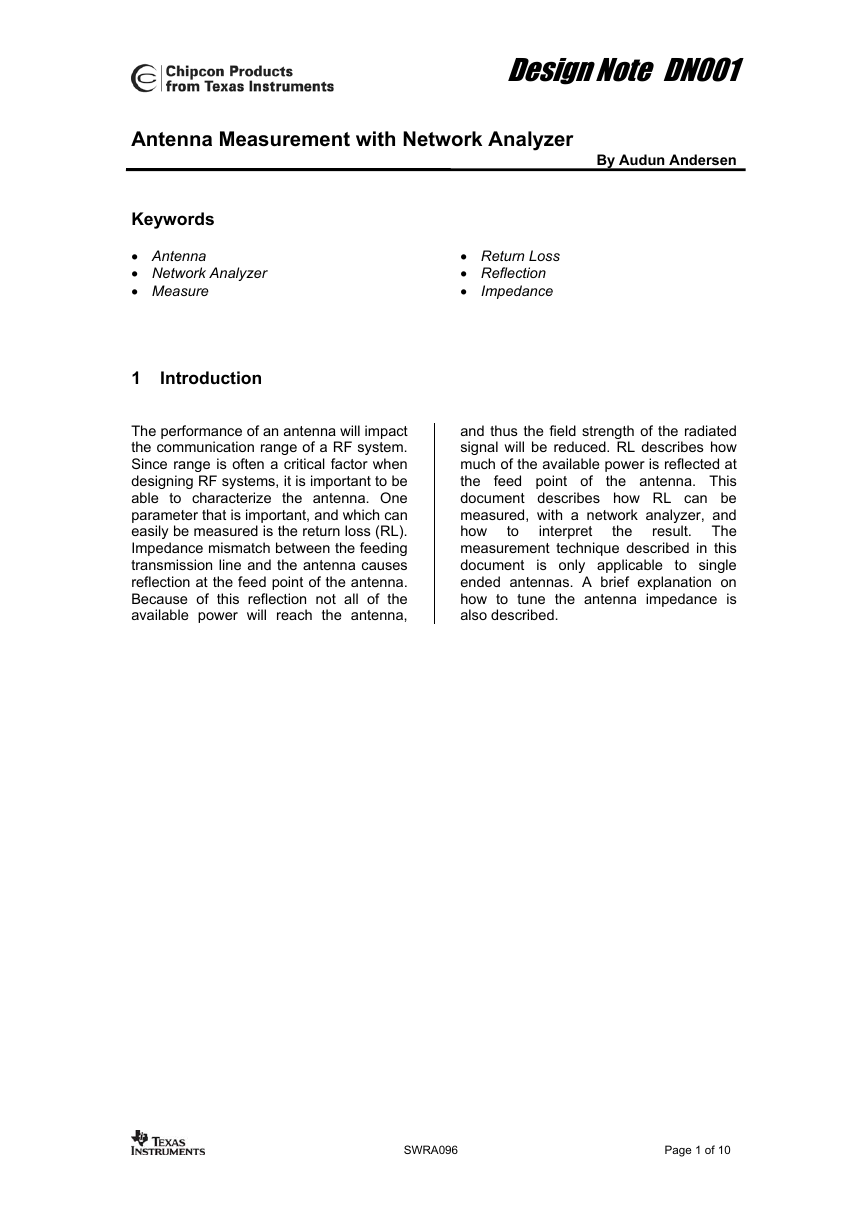
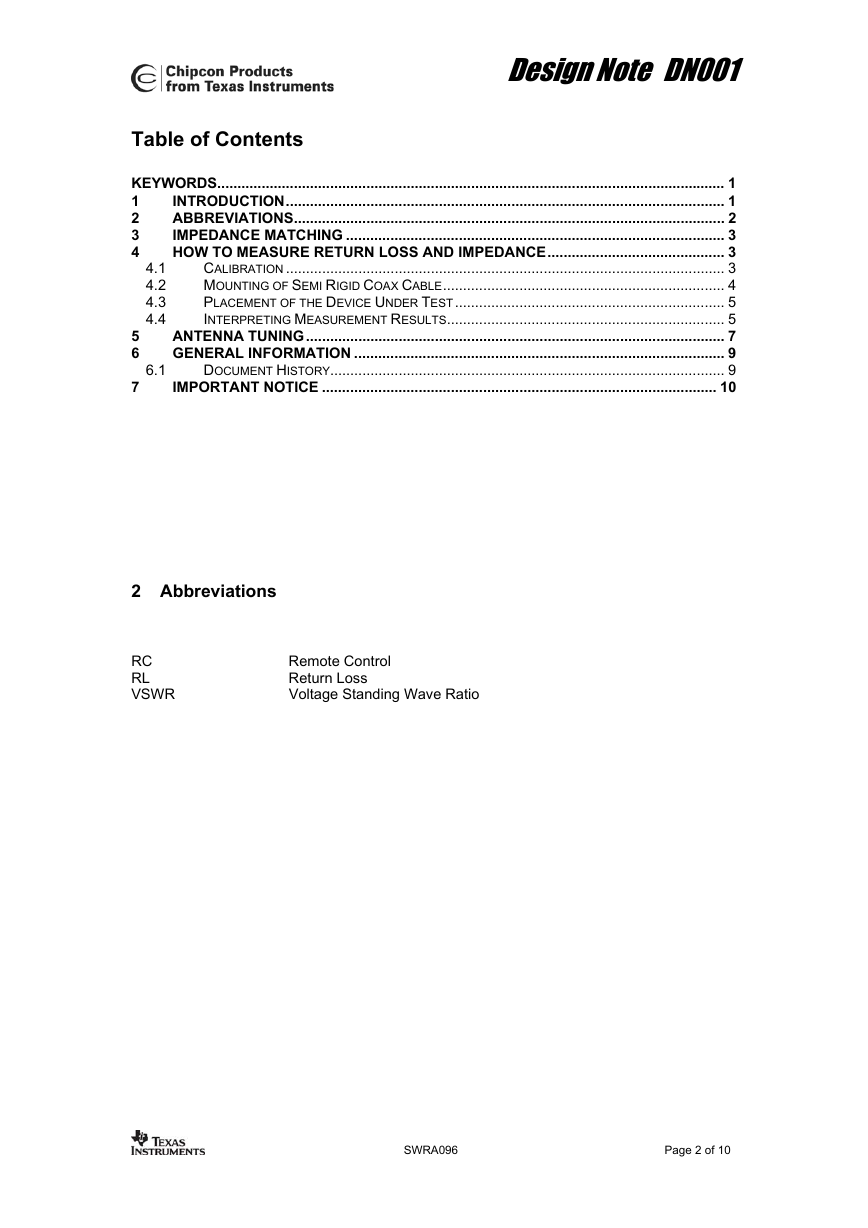
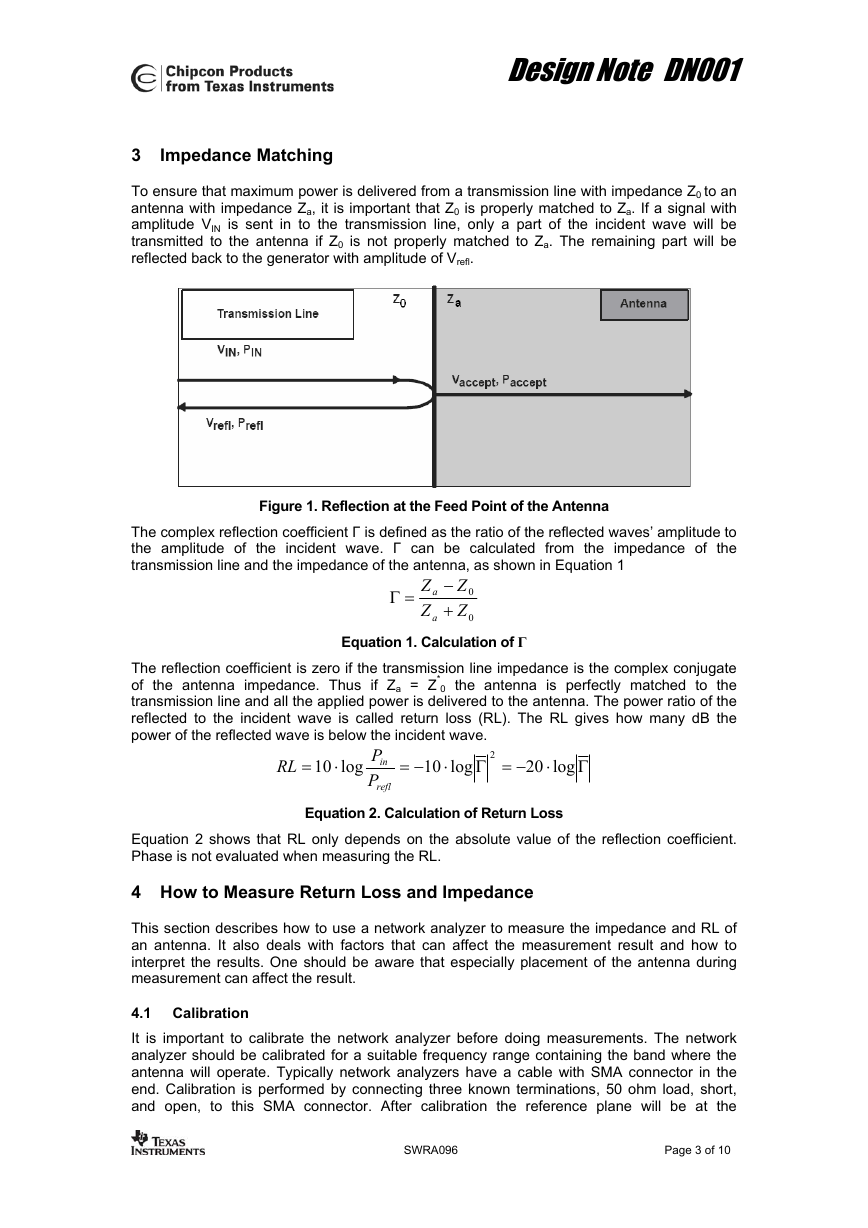
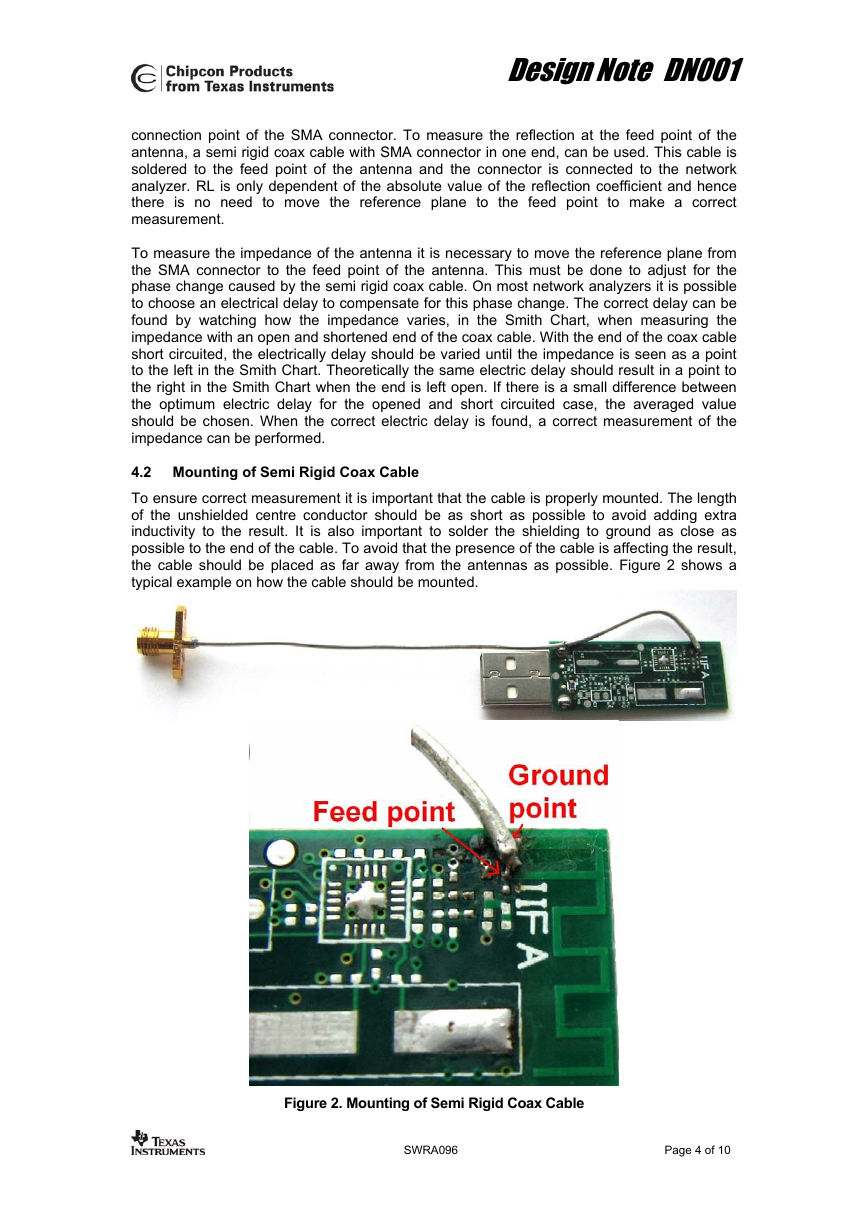


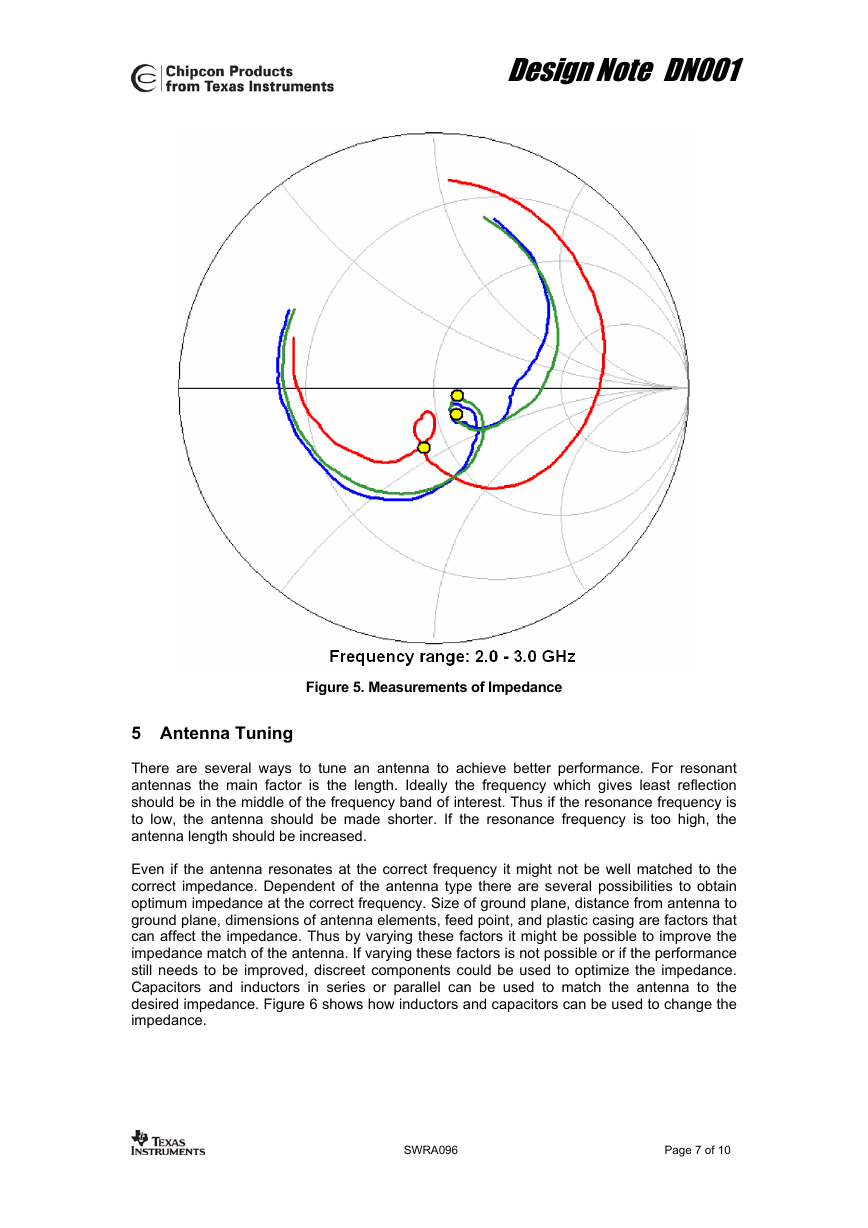
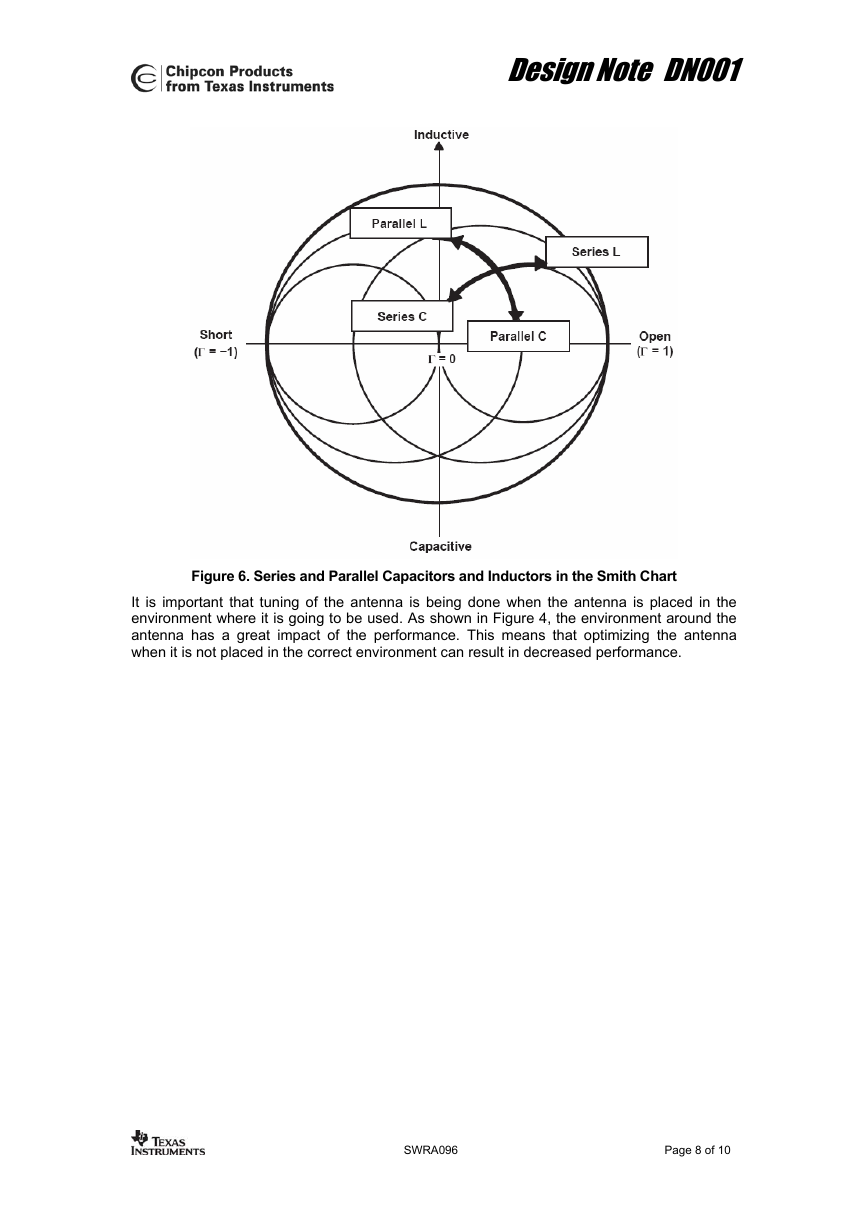








 uCOS-III的任务调度算法研究.pdf
uCOS-III的任务调度算法研究.pdf STM32F103x8B_DS_CH_V10(7STM32中文数据手册).pdf
STM32F103x8B_DS_CH_V10(7STM32中文数据手册).pdf FX2N系列PLC培训教程.pdf
FX2N系列PLC培训教程.pdf Modbus协议资料.pdf
Modbus协议资料.pdf WM8978中文资料(芯片资料).doc
WM8978中文资料(芯片资料).doc 5-1.【Codelab】HarmonyOS基于图像模块实现图库图片的四种常见操作.pdf
5-1.【Codelab】HarmonyOS基于图像模块实现图库图片的四种常见操作.pdf GX Developer 编程软件使用说明.pdf
GX Developer 编程软件使用说明.pdf MR-E伺服与FX3G接线图.pdf
MR-E伺服与FX3G接线图.pdf ATK-NEO-6M GPS模块常见问题汇总_201400721.pdf
ATK-NEO-6M GPS模块常见问题汇总_201400721.pdf STM32F407ZGT6(芯片资料).pdf
STM32F407ZGT6(芯片资料).pdf FM1715编程指南.pdf
FM1715编程指南.pdf Profibus教程-7.PROFIBUS-FMS.pdf
Profibus教程-7.PROFIBUS-FMS.pdf